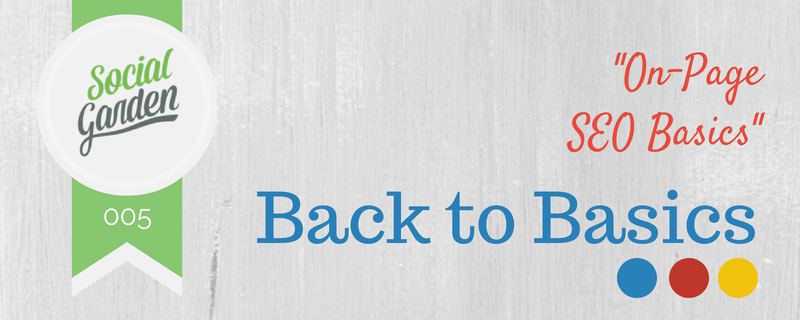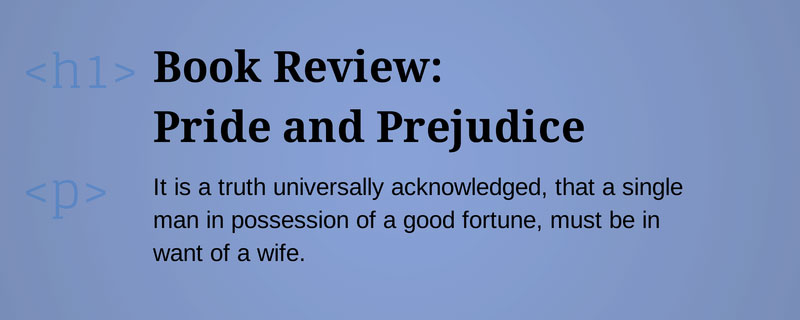BLOG
Back to Basics: On-Page SEO – What is it exactly?

You may think you are already doing everything you can to help your website. Banner ads, emails and a great PR campaign all help a website, but these tactics are missing a crucial part of online promotion: On-page SEO. This is a term for all the pieces that make up your website when they are optimised for search engines. When Google searches for websites related to a keyword, it digs through every page it can find that is related to it. The elements on your page (and hidden in the HTML code) are the lure that will draw Google’s eye.
Solid On-Page SEO
It can be a lot to take in, but you cannot afford to ignore this for much longer. Websites that optimise for Google searches perform far better than non-optimised websites. This is a hurdle that no amount of conventional marketing can solve. Correct SEO methods are the bedrock for a solid web presence. The best way to demonstrate exactly what we mean by this is to show you how every part of a website can be optimised for search engines.

Choose a smart URL
In Google’s search crawl, the URL of a website is identified very early. When you are building backlinks to other websites, the people you are hoping to attract will see that link. You want this gateway to your website to be informative for the user and indicative for Google. Use the keywords of your website in the URL.
Having a lot of extra numbers, letters and symbols can discourage a potential viewer if the next result clearly says what they are looking for. You want your URL to indicate exactly what the website is about. If a website that talks about energy efficient cars has a URL that looks like:
www.greencars.com/index.php?id=3
This website will not picked as much as:
www.greencars.com/top-10-efficient-vehicles
The second example is clear and tells the user what to expect. The first example is unclear. Stepping into an unknown website can scare away a lot of viewers. This URL should also fall into the limit of 90 characters or less. This is the limit of what can be displayed in most search engines before use the “…” is used. Brevity and simplicity is the goal here.
Create a Title that Epitomises your Site
The title of your website and the title of content are immensely important for search results. Along with the URL, the title of your website is identified very early in the search crawl. It also happens to be one of the only things a visitor will see before making a decision about which website to visit. Pay attention to how you look at search result pages if you don’t believe me. It is likely that you jump from title to title, only lingering on the meta-description if the title has caught your eye. Everyone operates the same way. Make sure they will pick your site.
A good title is a tricky thing to craft. It has to balance the use of your keyword(s) while being catchy to a visitor’s eye. Whereas the URL is mostly of concern for Google, the title will be seen by the user as well. The keywords present will be crucial to getting Google’s attention. Making these keywords stand out to users can be done by using words like “guides, “reviews”, “top #” and “best”. These phrases tend to draw more attention than just a bare set of words.

Here is a tip when you are reviewing your website’s HTML coding. The <h1> tag indicates to Google that this is a headline (read: title). This little tag immediately elevates your title over other titles that have not made this addition. It is small, but on-page SEO is all about the small advantages. If the HTML of your title does not look like <h1>title</h1>, then get it changed!
The Right Keywords Mean Everything
Keywords are a set of carefully chosen words that represent the overall theme of your website and what it contains. For instance, a website that is focused on luxury shoes may use the keywords “luxury shoes”, “expensive shoes” or “best shoes” depending on what they are aiming for. Keywords can change between the overall website and the content. Your main page may focus on “luxury shoes” while the article about the best luxury shoes may use “best shoes”.
Placing these keywords is very important. Though keywords are beginning to decrease in importance, they are still crucial. You want the keyword in all of the places we have discussed (title and URL) as well as once within the first 100-150 words of the content and the meta-description of your website. You then want to drop it a number of times in the article. A blog article of 1000-1500 words should use the keyword 3-5 times, for example.
Get some Eye Candy

Text is the bread and butter of the web, but it cannot do everything for you. Websites that use interesting visual media (be it video or images) retain users for a longer time and reduce your bounce rate. The location and nature of this visual media should reinforce and elaborate upon the keyword. A recipe site may have a video detailing how to put the dish together. How-to sites may use visually interesting diagrams to demonstrate the content easier.
The keyword should be present here as well. This is not as important for the Google crawl as it is for users. A well-placed keyword in an article is like the sign for an amusement park. It says, “Yes, you are here. This is exactly what you are looking for.” There are ways to make visual media work for you in the Google crawl though. Saving the image/video as the keyword is another indicator for Google to look at. For example, luxuryshoe.png is another use of our keyword for Google to see in its crawl.
Give them Something worth Reading
With all these tiny tricks of code and word placement, make sure you actually have something that will retain viewers. “Content is king” has been said a lot recently about the internet and it is incredibly true. Google’s search algorithm still values quantitative measures, but also pays attention to the authenticity, length and activity of a page’s content. Long articles and videos draw Google’s attention. The length tells Google that it is likely that someone is actually putting effort into the page and not just filling it with short, vapid content. This attention is only increased when it sees that a lot of people spend time looking at this content.
Great content gives the user a reason to come back to your site. Larger amounts of web traffic increase your value in Google’s search algorithm. This then gives Google a reason to rank you higher on the search pages. Unique, thoughtful and intriguing content can only help you.
Make it Fast and Adaptable

Website optimisation is an important part of website design. With the increasing number of browsers, service providers and devices that interact with the web, you face the challenge of providing the same content and visuals regardless of where your site is seen. If you have not already, make sure your website looks slick and original on everything from a regular PC or Mac to smartphone browsers. Not optimising for these different media can result in an awkward and crunched page design as it attempts to fit everything on a smaller screen and maybe even force the dreaded horizontal scroll bar to appear. Both of these things are very bad for how users evaluate your page.
Loading quickly is just as important as how your page looks. Studies have shown that four seconds is the longest most users are willing to wait for a page to load. The longer the wait time, the less likely that user will return to view your site. Optimising load speed can be done by optimising any extra code in your HTML framework, compressing images or videos and choosing a fast host provider.
Conclusion
On-page SEO makes up all the little things that can be optimised to boost your impression in Google’s search results. These various pieces of SEO can collectively help boost your visibility and presence online. It is time to crack open your website and ask yourself what you can be doing better. Make some changes and start using correct SEO practices now.











